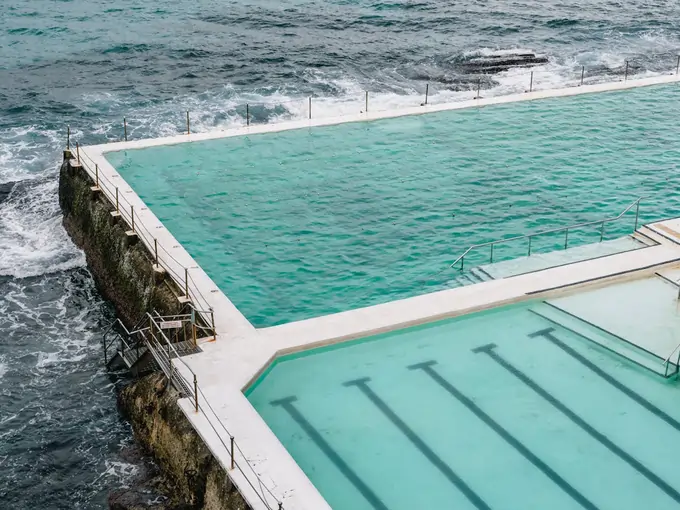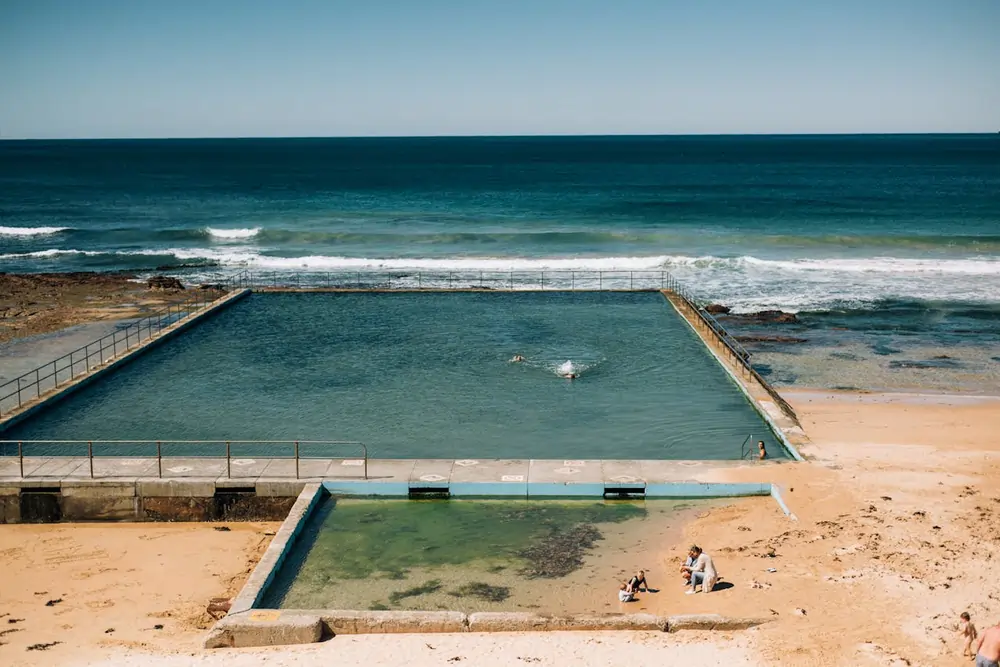Are you tired of red eyes, bleached swimsuits, and the harsh chemical smell of traditional chlorine pools? Salt water pool maintenance might be your solution. A recent study by the Pool and Hot Tub Alliance shows that 85% of new pool installations are salt water systems, with owners reporting 60% lower maintenance costs.
Salt Water Pool Care
Maintaining a salt water pool can seem daunting at first, but with a little guidance, you’ll find it’s easier than you think! Did you know that salt water pools can save you money on chemical costs and are gentler on your skin? In this guide, we’ll explore the essential steps to ensure your pool stays sparkling clean and inviting all summer long. Whether you’re a seasoned pool owner or just diving into the salt water experience, this article will help you keep your oasis in perfect condition!
Understanding Salt Water Pools
Understanding saltwater pools might seem tricky, but it’s actually quite chill. A saltwater pool uses a salt system to generate chlorine, which means less hassle with pool chemicals. To keep your pool in top shape, you need to test the water regularly and add salt as needed.
Unlike a traditional swimming pool, salt water pool maintenance involves maintaining the right salt concentration and water balance. This means you’ll need to test your salt levels and keep your water balanced to ensure proper water quality. Don’t forget to keep your pool filter clean and check your pool equipment regularly.
For salt water pool owners, the differences between salt water pool maintenance and traditional ones are clear. A salt water pool is easier to maintain, but you still need to take care of your salt. Using pool-grade salt and the right pool products will help keep your water clean and fresh. Remember, keep your salt levels consistent throughout the pool to enjoy a hassle-free swim!
Salt water pools work differently than you might think. They don’t use ocean water – instead, they use a salt chlorinator to convert regular salt into chlorine. The key differences between salt water and traditional pools lie in how they sanitize the water.
Benefits of salt water pools include:
- 50-70% lower operating costs
- Gentler on skin, eyes, and hair
- No chlorine storage needed
- More stable sanitizer levels
- Softer-feeling water
Common Misconceptions
- Salt water pools are chlorine-free (False – they generate their own chlorine)
- They’re maintenance-free (False – they require different, but regular care)
- The water tastes salty (False – salt levels are 1/10th of ocean water)
Essential Components of a Salt Water Pool

So, you’re thinking about owning a saltwater pool? Awesome choice! Just remember, saltwater pools require a bit of love. Regular saltwater pool maintenance is key to keep your saltwater pool in top shape. You’ll need to inspect the salt and clean your salt cell to keep the water clean and sparkling.
To care for a saltwater pool, you gotta add enough salt and sometimes add more salt if needed. This ensures the salt water chlorinator works its magic. Occasionally, you might need to add fresh water to balance things out, especially if you’ve lost a significant amount of water from splashing or evaporation.
Keeping an eye on the levels in your pool is crucial. When you get a saltwater pool, it helps to understand water chemistry. This knowledge will help more people with water problems. By knowing how to keep your salt water balanced, you can ensure the water clean and clear around your pool, even at the bottom of the pool.
The heart of your system is the salt water generator. This device converts salt (NaCl) into chlorine through electrolysis. Essential salt water pool care tools include:
- Salt chlorinator cell
- Pool pump and filter
- Water testing kit
- Pool brush
- Skimmer net
- Vacuum system
Water Chemistry Basics
If you’re diving into the world of water chemistry, you need to keep your water balanced just like a normal pool. A salt water pool requires the right amount of salt to produce chlorine, which means you should regularly test your water and test your salt levels manually. Remember, proper water circulation is key to keeping everything in check.
When it comes to maintaining levels in your water, it’s crucial to test and balance pool chemicals. You can use a guide to help you navigate the ins and outs of a salt water pool. Don’t forget to inspect your salt levels often and put the salt directly into the water, ensuring it dissolves properly.
For those with an automatic pool cover, make sure it’s functioning well to keep the pool clean for a long time. Also, salt is also great for reducing maintenance around the pool. So, take care of your pool like any pool, and enjoy the benefits of a sparkling oasis!
Testing pool water regularly is crucial. Here’s what to monitor:
- pH balance for salt water pools: 7.2-7.6
- Alkalinity: 80-120 ppm
- Salt level: 2700-3400 ppm
- Free chlorine: 1-3 ppm
- Stabilizer: 60-80 ppm
Salt Levels Matter
Understanding salt levels in pools is critical. Too little salt means ineffective sanitization; too much can damage equipment. The right amount of salt depends on your pool volume:
Pool Size (gallons) × 0.075 = Pounds of salt needed
Regular Maintenance Tasks

If you’re one of those people with water chemistry skills, keeping your pool in top shape is a breeze. Just remember to add the right amount of chlorine directly to the water to keep things fresh.
When you’re pulling water from the pool, make sure you’re following a good guide to salt water pool care. This way, your pool stays awesome for a long time.
And don’t forget, not all equipment is compatible with salt, so check before you dive in!
Your pool maintenance checklist should include:
Daily Tasks
- Check chlorinator operation
- Remove debris with skimmer
- Run pump 8-12 hours
Weekly Tasks
- Test water chemistry
- Brush pool walls
- Vacuum pool floor
- Check salt cell for calcium buildup
Monthly Tasks
- Clean salt water pool thoroughly
- Inspect equipment
- Deep clean salt cell if needed
Troubleshooting Common Problems
Alright, so your pool’s acting up? If your water’s looking a bit cloudy, you might wanna check if you’ve dumped too much chlorine in there. Also, if you’ve left the pool for a long time without any maintenance, algae might be crashing the party. Give it a clean and balance those chemicals!
When salt water pool problems arise, act quickly. Common issues include:
Cloudy Water
Cloudy salt water pool solutions:
- Check filtration
- Test chemistry
- Shock if necessary
- Clean salt cell
Algae Growth
Algae prevention in pools requires:
- Proper circulation
- Balanced chemistry
- Regular brushing
- Adequate sanitizer levels
Winterizing Your Salt Water Pool
As the chilly season creeps in, it’s time to think about winterizing your saltwater oasis. First off, make sure to balance those chemicals, turning your pool into chlorine heaven. Keep an eye on the water level, and don’t forget to cover it up nice and tight!
Winterizing pool tips for cold climates:
- Clean thoroughly
- Balance chemistry
- Lower water level
- Clean salt cell
- Protect equipment
- Install pool cover
DIY Salt Water Pool Care Solutions
DIY pool care solutions can save money without compromising quality:
- Use baking soda to raise alkalinity
- Brush walls weekly to prevent algae
- Clean salt cell with vinegar solution
- Monitor water level to prevent air in system
Best Practices for Long-Term Success
Follow these best practices for salt water pools:
- Maintain consistent chemistry
- Run system during daylight hours
- Clean salt cell every 3-6 months
- Replace salt cell every 3-7 years
- Keep detailed maintenance records
Conclusion
Salt water pool care doesn’t have to be overwhelming! By understanding the basics and staying on top of regular maintenance, you can enjoy a beautiful, clear pool all season long. Remember to keep an eye on your water chemistry and address any issues promptly. Ready to dive in? Share your tips and experiences in the comments below, and let’s create a community of happy pool owners!
Remember: The key to success is consistency in care and monitoring. Start with these guidelines, and you’ll have a sparkling, comfortable pool that’s the envy of your neighborhood.

